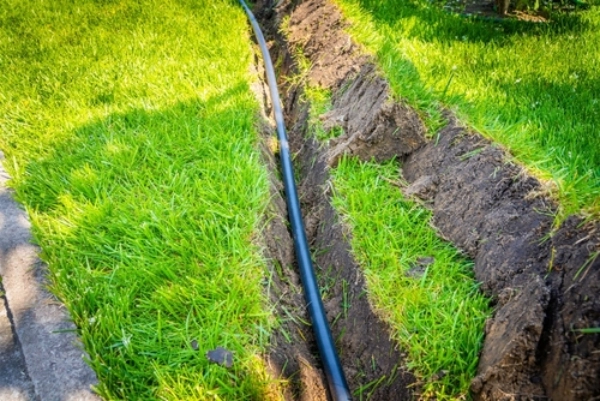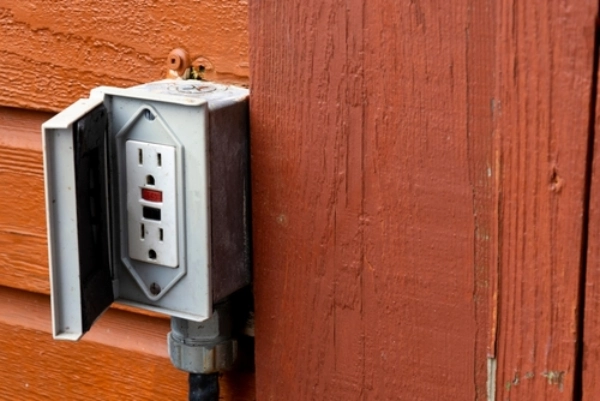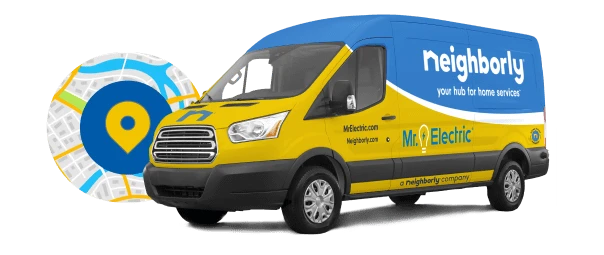.webp)
Mr. Electric explains how to add electricity to a shed.
|
Whether you're building a home office, creating a DIY workspace, or simply need to power up your lawn tools, adding electricity to your shed is a bright idea. A shed with electricity flips the switch on comfort, productivity, and safety, especially if you're using the space regularly.
But before you string an extension cord across the lawn (there's a shocking reason not to!), let’s walk through the key considerations for running electricity to a shed. This comprehensive guide answers all your top questions, including how to get power to an outdoor shed, safety codes to know, and whether hiring a professional electrician is the best option for your needs.
Why Add Electricity to a Shed?
Adding power in a shed isn’t just about flipping a switch. It’s about transforming your outdoor building into a fully functional extension of your home or workspace. Here’s what you can do with a powered shed:
- Create a home office or remote work hub
- Power your workshop tools and lights
- Add lighting, outlets, and heating for all-season use
- Charge electric lawn equipment
- Install a mini fridge or entertainment setup
From crafting and creating to chilling and charging, running electricity to a shed opens up endless possibilities—as long as the job is done safely and correctly.
DIY electrical work is risky without the proper tools, knowledge, and permits. Mistakes can lead to shock hazards, electrical fires, or serious code violations. Hiring a trained electrician ensures the work is safe, up to code, and reliable for years to come.
How to Run Electricity to a Shed: Key Steps

When planning how to run electricity to your shed, bear in mind that this is usually not a simple afternoon project. We’ll break down the process and how a service professional can help.
1. Plan the power load
Determine what you’ll be powering. Will it just be lights and a fan, or are you planning to run a mini fridge, heater, or power tools?
Knowing your total electrical load helps your electrician determine:
- Circuit size
- Number of outlets
- Whether a dedicated subpanel is needed
2. Choose the Power Source
There are three common ways to get power to an outdoor shed:
- Hooking up a generator: The simplest method for basic applications, but with some caveats. Home generators come with their own costs, including fuel, maintenance, and noise, and they cannot be placed inside the shed due to the risk of hazardous fumes.
- Installing a solar panel: While eco-friendly and easy on your energy bill, solar panels may be impractical if the shed is in a frequently shaded area. They also require a large surface area, which may impact their usefulness in a small garden shed.
- Running electricity from the home: This is generally considered the safest and most reliable long-term solution for powering a shed. While overhead wiring is sometimes used, running wiring through a buried conduit is preferred.
Most homeowners opt for an underground conduit installed by trained electricians. Buried conduit is safer, longer-lasting, and better protected from weather and physical damage.
3. Apply for Permits
You can’t legally or safely install electricity to a shed without local permits. A service professional will file for the right permits, ensure inspections are completed, and follow local building codes. Skipping this step can lead to fines or the forced removal of unpermitted work.
4. Install the Circuit
A dedicated circuit is often recommended for outdoor sheds. Running a new circuit from your main panel involves:
- Installing a dedicated breaker in your home’s panel
- Running approved outdoor-rated wiring to the shed
- Grounding the system properly for safety
- Installing a subpanel in the shed (if needed)
This step alone is enough to make most homeowners choose professional installation.
5. Add Interior Wiring
Once the main connection is established, interior outlets, lights, and switches can be installed. An electrician will also make sure GFCI protection is in place, which is often required by code in detached buildings.
Considerations When Installing Electrical in a Shed

If you’re researching how to install electricity to a shed, you’ll quickly discover there are numerous legal, technical, and safety hoops to jump through. Here are the essential best practices:
- Use outdoor-rated materials. Every component—from cables to conduit to outlets—must be rated for exterior use or direct burial. Using indoor-grade materials outside can result in shock, fire, or premature failure.
- Install GFCI outlets. Ground Fault Circuit Interrupters (GFCIs) are required in outdoor or wet environments to help prevent electrical shock and electrocution. They are essential in sheds, especially those that lack climate control.
- Protect your wiring. Wiring should be:
- Buried at least 12–24 inches deep (depending on local code and type of wiring).
- Run in conduit when required.
- Clearly marked and protected from lawn tools or pests.
- Ground the system. Even if your shed draws power from your home, it often needs its own grounding rod to safely disperse excess electricity.
Avoid These Common DIY Pitfalls
Trying to save money by installing a shed with electricity yourself might sound appealing—until things go wrong. Here are some common DIY errors that could result in far costlier problems:
- Not using GFCI protection
- Forgetting grounding rods
- Using the wrong wire gauge
- Improper trench depth
- Skipping the permit process
- Overloading circuits
These aren’t just code violations; they can lead to property damage, voided homeowners’ insurance, injury, or death. If you aren’t trained in electrical work, hiring a professional to run electricity to your shed is always the best choice.
Choose Mr. Electric for Safe, Smart Shed Wiring
Adding electricity to a shed should never involve guesswork. Mr. Electric® helps you power your space the safe and smart way—from planning and permits to final inspection.
Our service professionals:
- Understand national and local electrical codes
- Help you plan for present and future needs
- Use top-rated materials and best practices
- Provide guaranteed upfront pricing
- Back every service with the Neighborly Done Right Promise®
Whether you’re wondering how to install electricity to a shed or simply looking for advice on running electricity to a shed for the first time, our expert electricians are here to help. Mr. Electric’s highly trained professionals handle everything from planning and permitting to wiring and testing.
Contact your local Mr. Electric team today to schedule an estimate and light up your shed’s potential—no sparks, no stress.
This article is intended for general guidance only and is not applicable to every situation. You are responsible for determining the proper course of action for your property and situation. Mr. Electric is not responsible for any damages that occur as a result of advice and/or guidance derived from its blog content.
FAQs About Running Electricity to a Shed
The safety of you, your family, and your home are the top priority of every Mr. Electric service professional. Our safety-first commitment to solving your electrical issues includes meticulous attention to detail on every job. Our commitment also includes using our years of experience to answer your questions. Below are answers to some of the most frequently asked questions about how to safely add electricity to your shed.
Is it legal to run electricity to a shed without a permit?
No. Most municipalities require permits to run electricity to a shed. Mr. Electric service professionals handle all permitting and inspections to ensure full code compliance and safety.
What’s the safest way to get power to an outdoor shed?
Underground conduit wiring is the safest and most reliable method to power an outdoor shed. It protects cables from weather, lawn equipment, gnawing animals, and other hazards. Overhead wiring is a less labor-intensive alternative, but it offers less long-term protection.
Do I need a subpanel in my shed with electricity?
If you plan to use the shed to power multiple outlets, lights, or high-demand tools, a dedicated subpanel ensures proper load management and distribution. A professional electrician can assess your usage needs and recommend the right setup.
What safety measures are required for installing electricity in a shed?
GFCI protection, proper grounding, weather-rated materials, and correct trench depth are all critical for safely connecting electricity to a shed. Failing to meet these requirements can result in serious hazards or code violations.
Can I use an extension cord instead of adding electricity to a shed?
No. Extension cords are a temporary solution and pose serious safety risks if used long-term. They are not compliant with electrical codes and are not a safe alternative to adding electricity to a shed professionally.
What’s the average cost of running electricity to a shed?
The cost of running electricity to a shed varies depending on the wiring method, distance, electrical load, and permits. Mr. Electric offers guaranteed upfront pricing and code-compliant installations.

